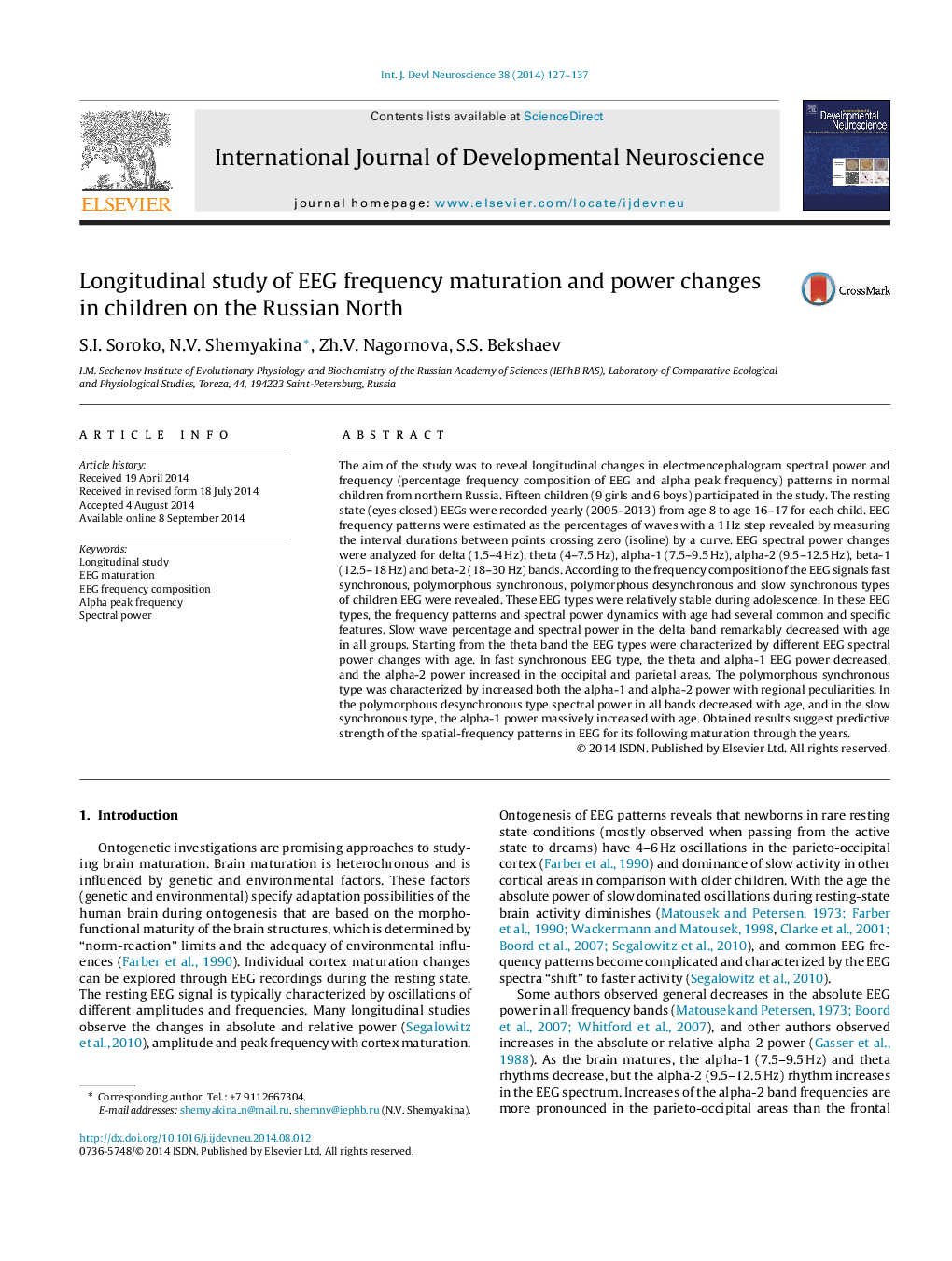| کد مقاله | کد نشریه | سال انتشار | مقاله انگلیسی | نسخه تمام متن |
|---|---|---|---|---|
| 2785964 | 1568393 | 2014 | 11 صفحه PDF | دانلود رایگان |

• Resting EEG demonstrates decrease of low frequencies and increase of high frequencies during school-age.
• EEG spatial-frequency structure is rather stable through adolescence.
• Different EEG frequency structure types can be bound with different strategies of EEG maturations during school-age.
The aim of the study was to reveal longitudinal changes in electroencephalogram spectral power and frequency (percentage frequency composition of EEG and alpha peak frequency) patterns in normal children from northern Russia. Fifteen children (9 girls and 6 boys) participated in the study. The resting state (eyes closed) EEGs were recorded yearly (2005–2013) from age 8 to age 16–17 for each child. EEG frequency patterns were estimated as the percentages of waves with a 1 Hz step revealed by measuring the interval durations between points crossing zero (isoline) by a curve. EEG spectral power changes were analyzed for delta (1.5–4 Hz), theta (4–7.5 Hz), alpha-1 (7.5–9.5 Hz), alpha-2 (9.5–12.5 Hz), beta-1 (12.5–18 Hz) and beta-2 (18–30 Hz) bands. According to the frequency composition of the EEG signals fast synchronous, polymorphous synchronous, polymorphous desynchronous and slow synchronous types of children EEG were revealed. These EEG types were relatively stable during adolescence. In these EEG types, the frequency patterns and spectral power dynamics with age had several common and specific features. Slow wave percentage and spectral power in the delta band remarkably decreased with age in all groups. Starting from the theta band the EEG types were characterized by different EEG spectral power changes with age. In fast synchronous EEG type, the theta and alpha-1 EEG power decreased, and the alpha-2 power increased in the occipital and parietal areas. The polymorphous synchronous type was characterized by increased both the alpha-1 and alpha-2 power with regional peculiarities. In the polymorphous desynchronous type spectral power in all bands decreased with age, and in the slow synchronous type, the alpha-1 power massively increased with age. Obtained results suggest predictive strength of the spatial-frequency patterns in EEG for its following maturation through the years.
Journal: International Journal of Developmental Neuroscience - Volume 38, November 2014, Pages 127–137